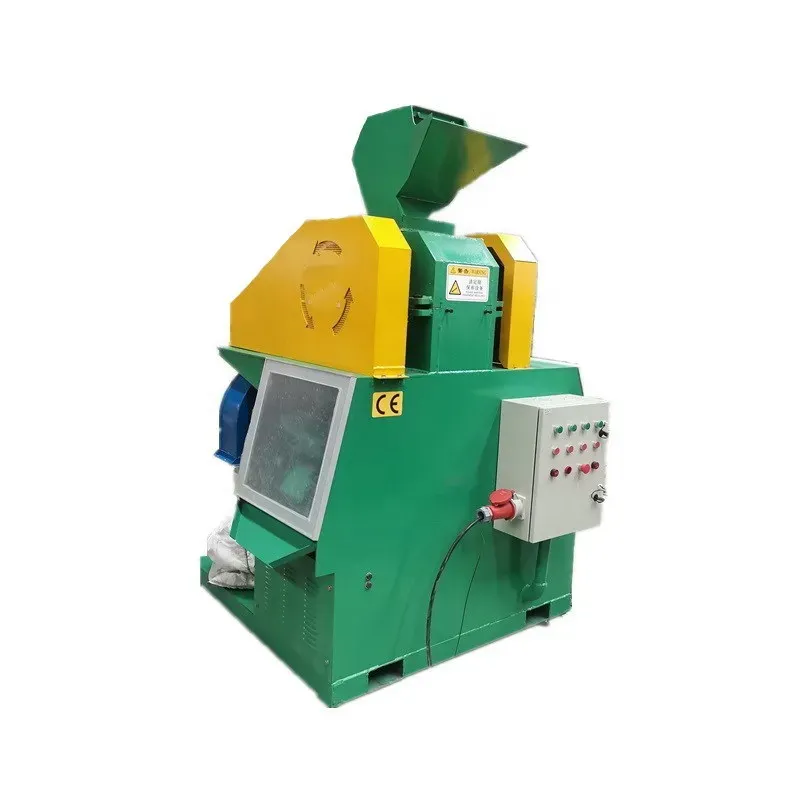

നവം . 26, 2024 08:43 Back to list
How to Build an Eddy Current Separator
Eddy current separators are widely used in recycling and waste management industries to separate non-ferrous metals from other materials. Their unique ability to differentiate based on conductivity makes them invaluable in recovering valuable metals such as aluminum and copper from waste streams. In this article, we will outline the steps to build an eddy current separator and discuss the key components involved.
Understanding Eddy Current Separation
Before diving into the construction process, it is essential to understand the principle of eddy current separation. The technology relies on the interaction between a changing magnetic field and conductive materials. When a non-ferrous metal enters the rotating magnetic field produced by a magnetic drum, it induces eddy currents in the metal. These currents generate a secondary magnetic field that creates a repulsive force, causing the metal to be ejected from the main flow of materials.
Necessary Components
To build an eddy current separator, you will need the following components
1. Frame A robust frame to support the entire assembly. It should be made from durable materials like steel to withstand vibrations and stresses during operation.
2. Magnetic Drum The heart of the eddy current separator. The drum must have a high-energy permanent magnet or an electromagnet to generate the magnetic field. It usually features a rotating mechanism to maintain a consistent magnetic field as materials pass over it.
3. Conveyor Belt A belt to transport the mixed materials towards the magnetic drum. The belt must be designed to withstand abrasive materials and should have adequate traction to facilitate smooth movement.
4. Separation Chute A trough or chute positioned at an angle beneath the magnetic drum where the separated materials will be collected. The design should allow for both ferrous and non-ferrous materials to be channeled effectively.
5. Drive Motor An electric motor to power the conveyor belt and the rotation of the magnetic drum. The motor's power will depend on the size of the unit and the volume of materials being processed.

6. Control System A simple electrical control circuit to manage the motor functions, including the start, stop, and speed control of the conveyor belt and the magnetic drum.
Step-by-Step Construction
1. Designing the Layout Start with a blueprint that illustrates the overall layout of the eddy current separator. Make sure to consider the dimensions of each component and the space available for assembly.
2. Building the Frame Construct the frame using steel or heavy-duty materials. Ensure it provides sufficient support for the magnetic drum and conveyor system. Use welding techniques to join the pieces, ensuring a stable structure.
3. Mounting the Magnetic Drum Attach the magnetic drum securely to the frame. Ensure that it is aligned properly with the conveyor belt so that materials will flow seamlessly into the magnetic field.
4. Installing the Conveyor Belt Position the conveyor belt above the magnetic drum. Install pulleys and bearings to facilitate smooth movement. Test the belt's tension and alignment to prevent any misalignment during operation.
5. Connecting the Drive Motor Attach the drive motor to the conveyor belt system, ensuring that the power transmission is effective. Ensure proper alignment with the conveyor to avoid wear and tear.
6. Setting Up the Control System Wire the electrical components to create a functional control system. Include switches for operation and safety features that stop the machine if any malfunction occurs.
7. Testing the System Once assembled, conduct a testing phase. Feed a mixture of materials containing non-ferrous metals into the conveyor system. Observe how well the eddy current separator separates the metals from the rest of the materials. Adjust the speed and alignment as necessary to enhance performance.
Conclusion
Building an eddy current separator can be a rewarding project that improves recycling efficiency and metal recovery. By understanding the principles of eddy current separation and following the steps outlined, one can construct a functional separator. Careful consideration of components and meticulous assembly will yield a reliable machine capable of significantly contributing to waste management efforts. With the ongoing push for sustainability, eddy current separators stand out as a key technology in promoting efficient recycling practices.
Latest news
Troubleshooting Common Eddy Separator Problems
NewsJul.04,2025
The Role of Metal Recycling Plants in Circular Economy
NewsJul.04,2025
The Impact of Recycling Line Pickers on Waste Management Costs
NewsJul.04,2025
Safety Features Every Metal Shredder Should Have
NewsJul.04,2025
How Industrial Shredders Improve Waste Management Systems
NewsJul.04,2025
How Cable Granulators Contribute to Sustainable Recycling
NewsJul.04,2025